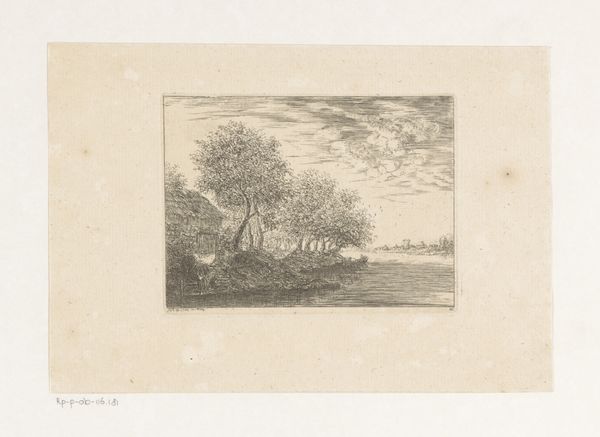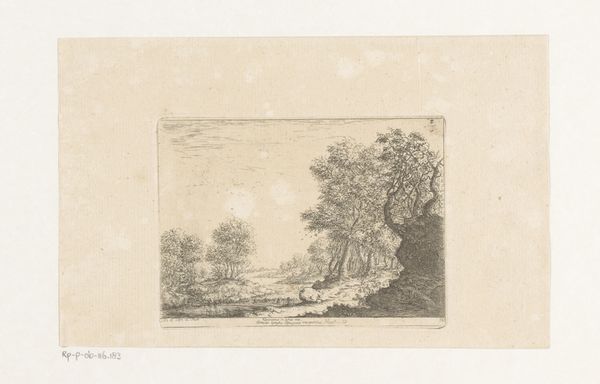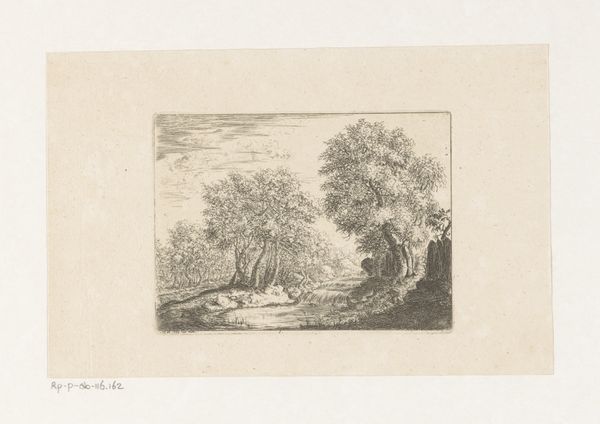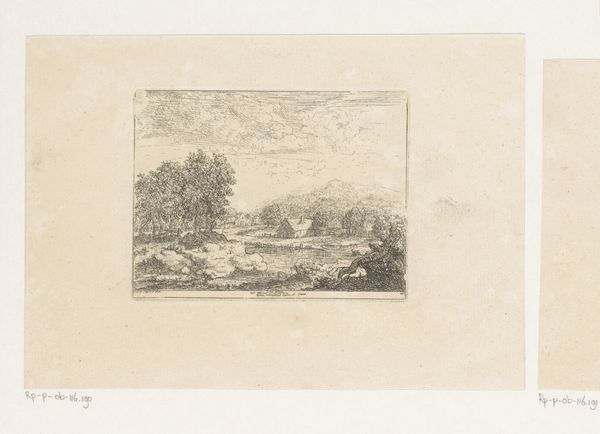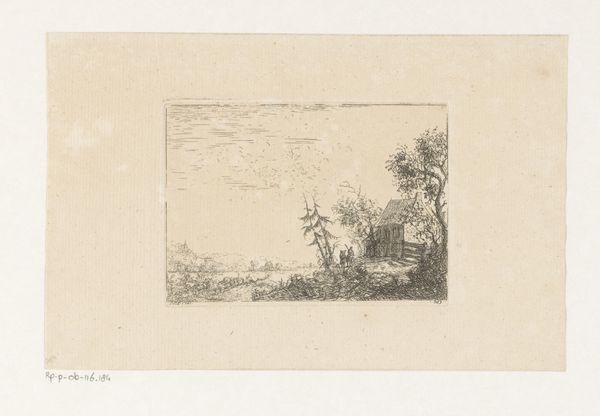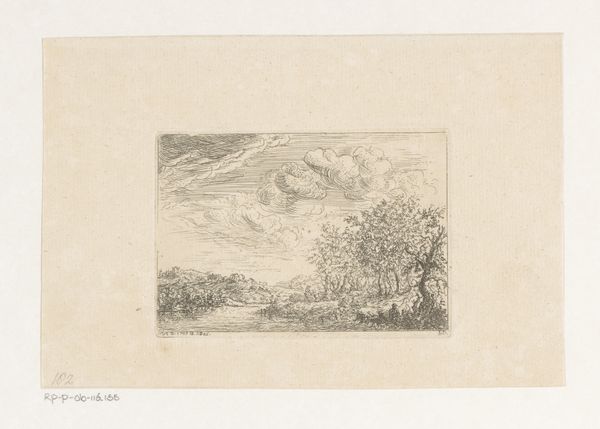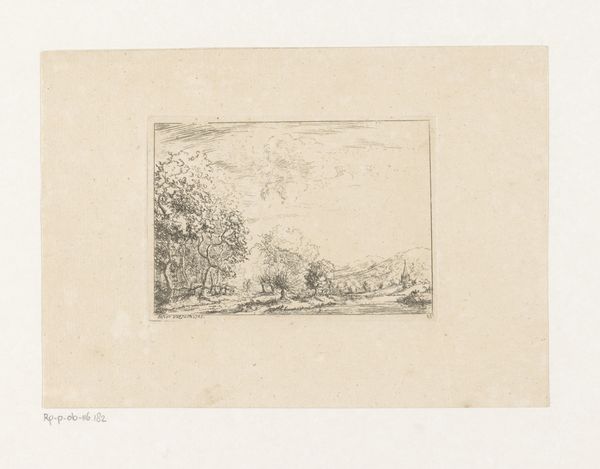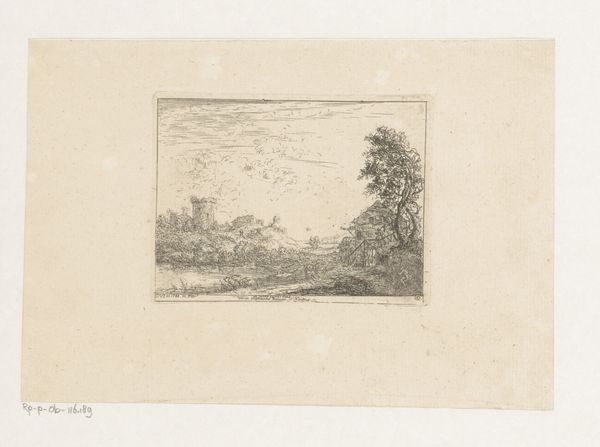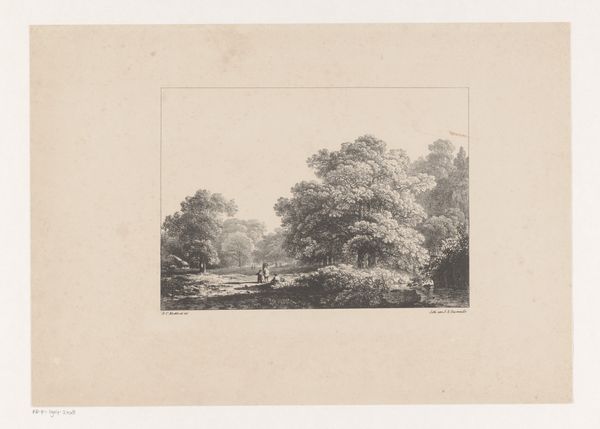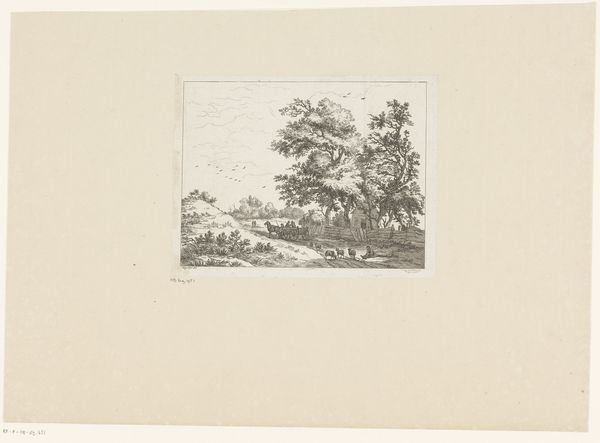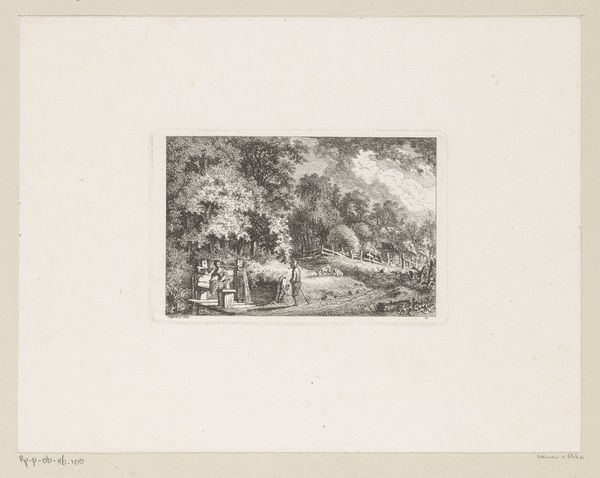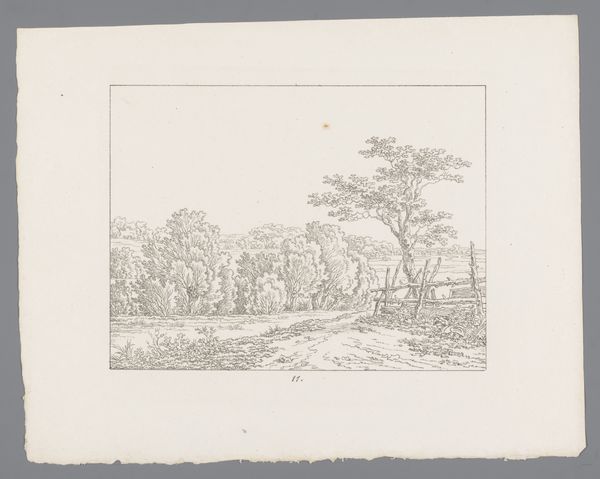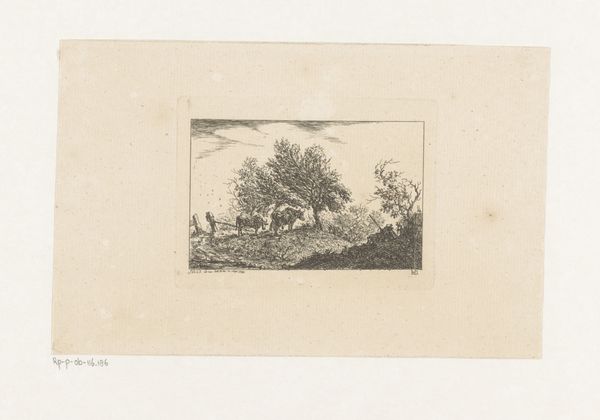
print, etching, paper
# print
#
etching
#
landscape
#
paper
#
genre-painting
Dimensions: height 89 mm, width 140 mm
Copyright: Rijks Museum: Open Domain
Curator: This is a landscape print dating possibly from 1744 by Christian Ludwig von Hagedorn, here at the Rijksmuseum, titled "Huis aan het water in een boslandschap." It’s made with etching on paper. What's your initial take? Editor: It has a tranquil, almost melancholic atmosphere, doesn't it? The contrast between the detailed trees and the still water creates a reflective mood. I’m curious, what does a seemingly simple scene like this say about the period's values or concerns? Curator: Landscapes were often more than just pretty pictures; they conveyed ideas about nature and society. Hagedorn might be presenting an idealized vision of rural life, something increasingly appealing as urban centers grew and changed. The presence of the house on the water's edge suggests human interaction with nature. The house becomes symbolic; could it embody retreat and contemplation, far from societal upheaval? Editor: Absolutely. And the specific choice of a more 'rustic' dwelling also speaks volumes. I see a deliberate counterpoint to more opulent displays of wealth; it presents the notion of virtue found in a modest setting. It fits the emerging genre painting conventions nicely too. This tiny print engages complex ideas, doesn't it? Curator: Indeed. It uses potent symbolism despite its small size. Take note of the water itself, an archetypal symbol. In many traditions, bodies of water represent change, fluidity, the subconscious. The image invites viewers to consider their own connection to nature, as well as humanity's fleeting role within it. The etching medium too—the print can be widely reproduced and disseminated, engaging public sentiment in new ways. Editor: I agree; etching allows for subtle gradations, further enhancing the contemplative mood. It brings up a thought - to what extent were works like this influencing contemporary political sentiment, especially among the burgeoning middle classes? Perhaps its simplicity masks more intricate commentary regarding socio-economic structures, promoting egalitarian ideals through the portrayal of a balanced natural world. Curator: It definitely invites this speculation, and reminds us of the powerful influence visual symbolism exerts even through apparently "minor" pieces like prints. Editor: A lovely image which definitely challenges the notion of passive landscape viewing! It speaks volumes if we care to listen carefully.
Comments
No comments
Be the first to comment and join the conversation on the ultimate creative platform.
